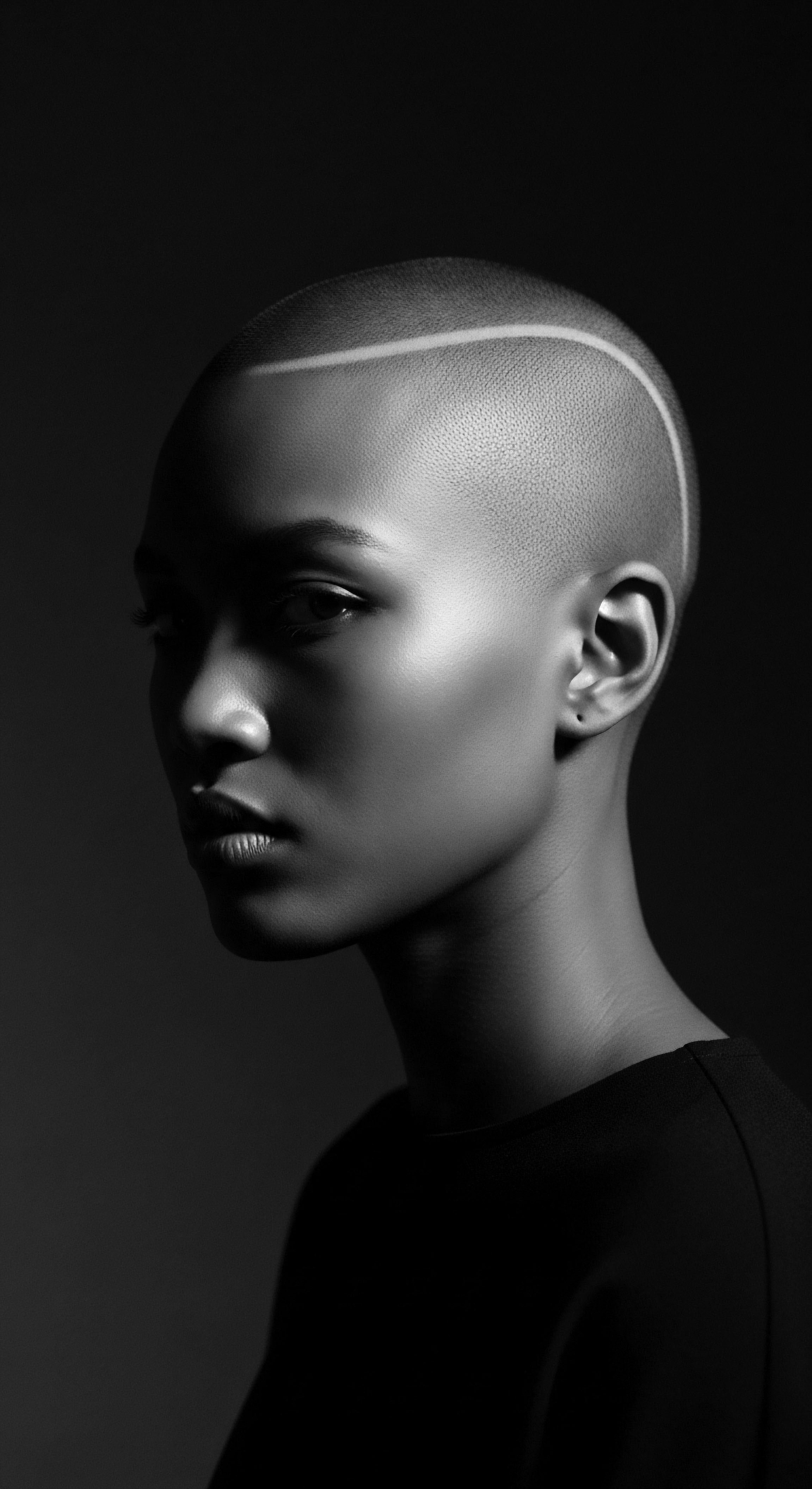
Fundamentals
The conversation surrounding scalp vitality, especially for those with textured hair, extends beyond mere surface concerns. It encompasses a profound understanding of the dermal landscape beneath the hair, the delicate ecosystem residing there, and the deep ancestral ties that connect our present care rituals to traditions spanning generations. When we consider Textured Scalp Health, we are discerning the biological well-being of the skin that cradles each strand, recognizing it as a vibrant foundation. This means appreciating the balanced hydration levels, the absence of irritation or flaking, and the proper functioning of sebaceous glands and hair follicles, all within the context of hair types that coil, curve, and bend in their distinct formations.
At its simplest, a healthy textured scalp supports optimal hair growth and retention. This environment fosters a robust follicular cycle, where hair can emerge, flourish, and complete its natural lifespan without undue interruption. For individuals with tighter curl patterns, the journey of a strand from follicle to tip presents a unique architecture. The natural curvature of the hair shaft means the scalp’s natural oils, known as sebum, travel along a more circuitous route.
This particularity can lead to a predisposition for dryness along the hair shaft itself, even if the scalp produces sufficient oils. Understanding this fundamental biological reality is the initial step toward nurturing textured scalp health. It explains why practices that might suit straight hair may not serve the coiled, kinky, or wavy forms, necessitating a different approach rooted in deep knowledge.
The historical context of hair care for people of African descent often began with an intuitive relationship to the land and its provisions. Ancestral communities, with their profound connection to natural rhythms, understood the importance of the scalp’s condition. They utilized ingredients harvested from their immediate surroundings to cleanse, soothe, and fortify. These traditional preparations, often derived from plants, butters, and oils, served not only to adorn but to protect.
They guarded against environmental elements and provided nourishment, cultivating an environment where scalp integrity was naturally upheld. The wisdom of these early applications forms the bedrock of our present-day comprehension.
Textured scalp health represents the foundational well-being of the skin beneath coiled strands, reflecting a balance between biology and the care traditions of those who maintain hair with a history.
For a person new to this topic, the concept of textured scalp health begins with a recognition of its intrinsic connection to hair type. Textured hair, by its very nature, demands specific consideration. The elliptical shape of its follicles and the characteristic twists along the hair shaft contribute to its strength, volume, and indeed, its glorious versatility.
Yet, these very characteristics also contribute to its sensitivity. The scalp beneath this hair type, therefore, requires a bespoke approach, one that acknowledges its unique physiology.
Common concerns that arise for textured scalps often relate to dryness, tightness, flaking, or irritation. These experiences can stem from various factors, including environmental conditions, product selection, or historical styling tendencies. The goal of nurturing textured scalp health is to mitigate these concerns, allowing the scalp to exist in a state of comfort and vitality.
It involves moving towards practices that support its natural function rather than disrupting it. This often means focusing on moisture retention for both the scalp and the hair, employing gentle cleansing methods, and choosing products that honor the scalp’s delicate balance.
In the ancestral traditions, the care of the head was often intertwined with spiritual and communal practices. The act of tending to one’s hair and scalp was a moment of connection, both personal and shared. These practices instilled a deep reverence for the body and its natural expressions. The scalp, as the point of emergence for hair, held significant meaning.
It was perceived as a gateway, a place of wisdom and grounding. Such understandings, though seemingly simple, informed the meticulous and patient care that was bestowed upon the scalp and hair, contributing to its enduring strength and beauty through time. This heritage teaches us that scalp health is not just about biology; it is also about spirit, connection, and the living legacy of care.
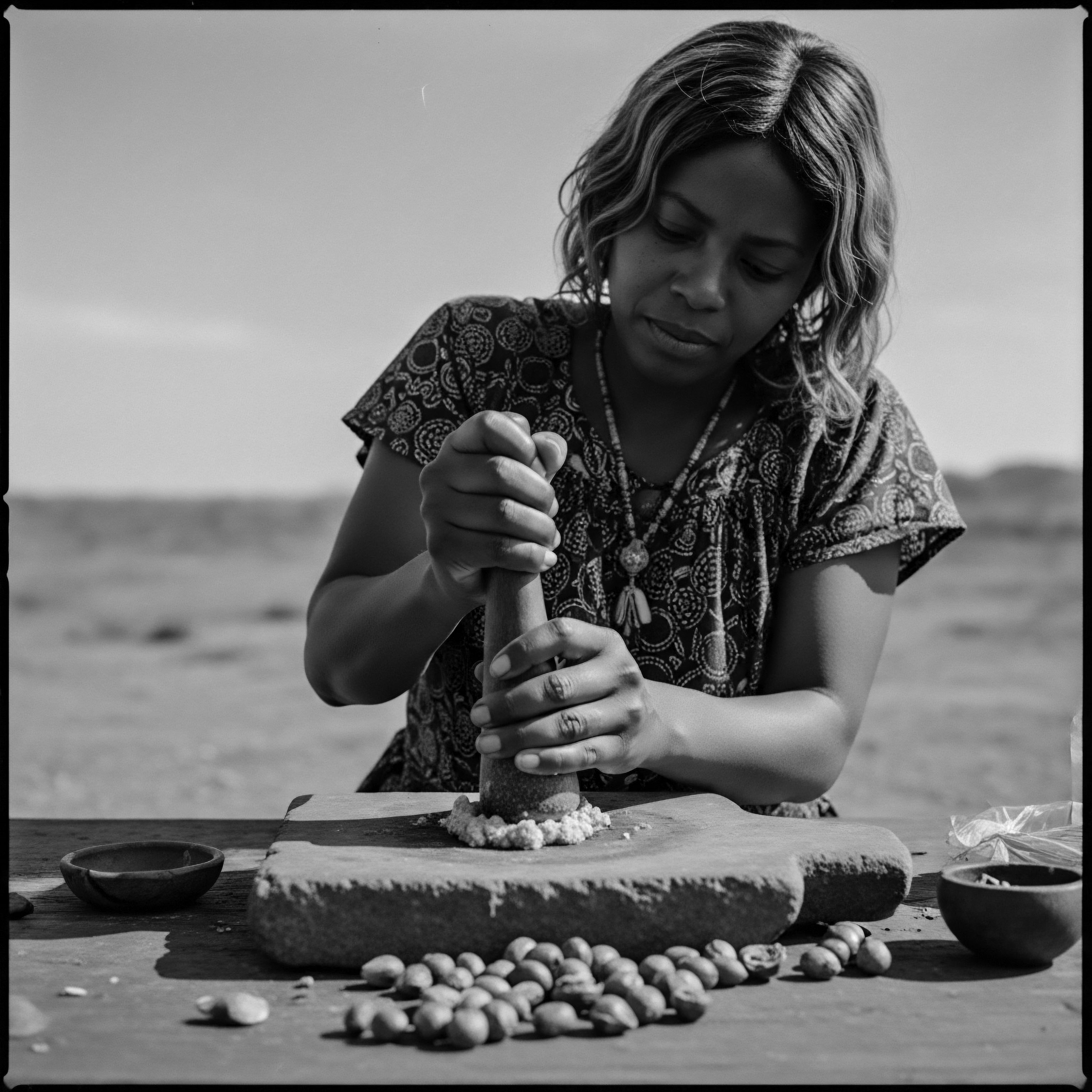
The Skin’s Sacred Surface
The skin of the scalp, like all skin, provides a protective barrier against external aggressors. Its unique composition, however, with a higher density of hair follicles and sebaceous glands compared to other areas, places it in a category of its own. For textured hair, the scalp’s role as the launching pad for strands is particularly pronounced. Each curved hair follicle emerges from the scalp, and the journey of this strand can be more prone to tangling, which in turn places a particular tension on the scalp.
Maintaining the integrity of this surface means ensuring its physiological processes proceed without hindrance. This includes the natural shedding of skin cells, the appropriate production of sebum, and the absence of microbial imbalances. When these processes are disrupted, symptoms such as itching, scaling, or redness can appear, signaling that the scalp’s delicate equilibrium has been disturbed. Recognizing these signs early allows for gentle, considered interventions, often drawing from practices passed down through generations.
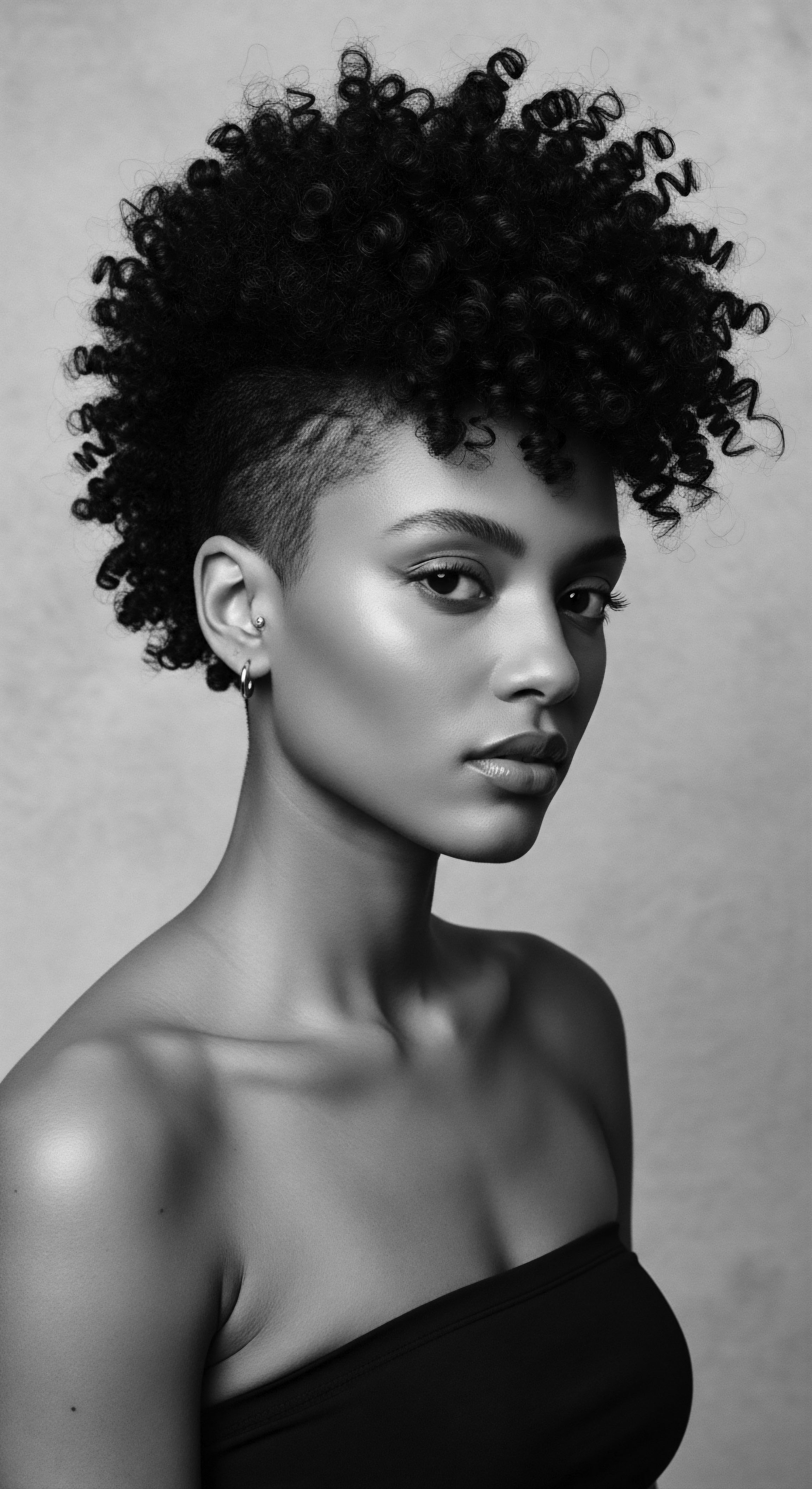
Nourishing the Roots of Identity
Ancestral practices consistently highlight the importance of nourishing the scalp directly. Long before modern science deciphered the precise mechanisms of cellular activity, communities instinctively understood that a well-cared-for scalp yielded strong, vibrant hair. This traditional wisdom often involved the application of nutrient-dense ingredients.
- Shea Butter ❉ Often utilized in West African communities, its rich, emollient properties provided a protective layer, sealing in moisture for the scalp and hair. This butter, derived from the shea tree, served as a natural barrier, particularly valuable in diverse climates.
- Coconut Oil ❉ A staple in many parts of the diaspora, including the Caribbean, this oil offered deep penetration and a natural ability to condition both scalp and strand. Its light yet moisturizing nature made it a favorite for daily application.
- Aloe Vera ❉ Valued for its soothing characteristics, the gel from the aloe plant was applied directly to calm irritated scalps and provide hydration. Its cool touch offered instant relief from discomfort, a testament to its gentle efficacy.
These elements represent a historical pharmacopeia, a collective intelligence regarding botanical applications that speaks to a profound observational wisdom. Their continued presence in modern textured hair care formulations is a testament to their enduring effectiveness and the wisdom embedded in ancestral rituals.
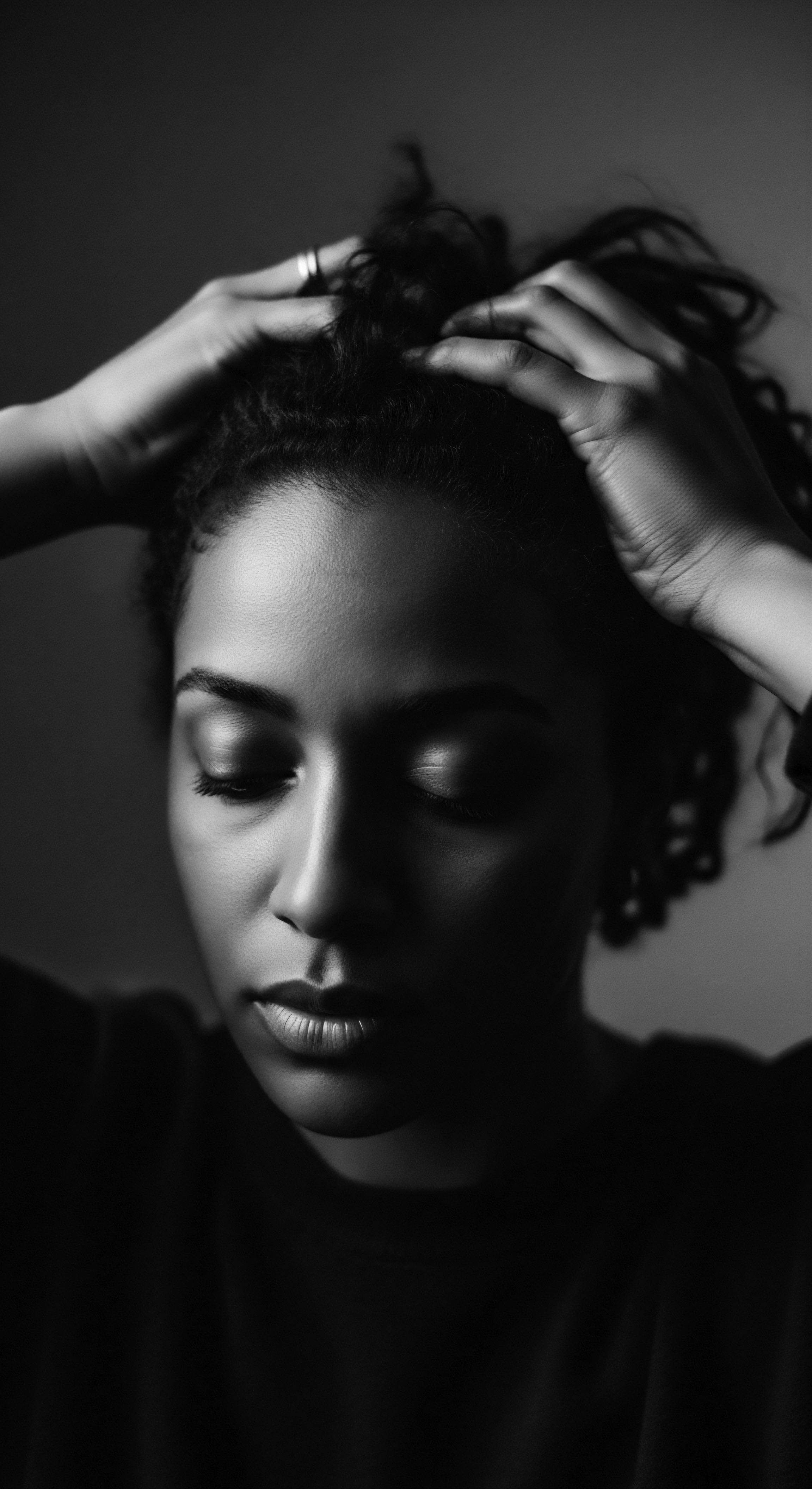
Intermediate
Delving into the more intricate layers of Textured Scalp Health requires an appreciation for the subtle interplay of factors that influence this vital terrain. Beyond the foundational biological aspects, we begin to consider environmental stressors, the nuances of product chemistry, and the psychosocial dimensions that have shaped hair practices within Black and mixed-race communities for centuries. The conceptualization here moves from basic well-being to a more dynamic understanding of how the scalp adapts, responds, and expresses its state amidst a complex web of influences, often directly tied to cultural identity and resilience.
The unique helical structure of textured hair means that the scalp itself is more exposed in places, or conversely, more densely covered in others, depending on the styling and curl pattern. This variance influences how products are distributed, how air circulates, and how environmental particles settle upon the skin. It implies a need for a nuanced approach to cleansing, moisturizing, and protecting the scalp, moving beyond generic solutions to those tailored to the specific needs of coiled and kinky textures. This requires a deeper knowledge of ingredients and their compatibility with the scalp’s natural processes.
Historically, the relationship between textured hair and its scalp has been a story of constant adaptation and innovation. As communities navigated new geographies and societal pressures, their hair care traditions evolved. The inherent dryness of many textured hair types meant that scalp hydration remained a persistent concern.
Traditional practices focused on layering nourishing oils and butters, often applied directly to the scalp, not just the hair shaft. This intuitive layering provided both a barrier and a source of emollients, mitigating potential irritation and supporting the scalp’s natural barrier function.
Textured scalp health, at an intermediate level, explores the intricate dance between biological predispositions, environmental adaptations, and the deeply ingrained cultural practices that shape care for coiled strands.
Consider the evolution of styling practices through history. Protective styles, such as braids, twists, and cornrows, were not merely aesthetic choices; they served as pragmatic solutions to manage hair that could be prone to tangling and breakage. These styles, while often beneficial for hair length retention, could, if too tautly applied, create tension on the scalp.
This tension, particularly at the hairline, could sometimes lead to specific forms of hair loss, an issue now recognized as Traction Alopecia. The historical adoption of such styles, driven by both practicality and cultural expression, provides a lens through which we comprehend the dual nature of protective practices—their beauty and their potential challenges.
The mid-20th century saw the widespread introduction of chemical straighteners, often referred to as relaxers, into Black hair care routines. This shift, influenced by prevailing beauty standards, profoundly impacted scalp health. The harsh chemicals used in these products often caused burns, irritation, and long-term changes to the scalp’s delicate epidermal layer.
This period marks a significant deviation from ancestral wisdom, prompting a new set of scalp concerns that were less about natural dryness and more about chemical assault. Understanding this historical arc helps us grasp why contemporary conversations around textured scalp health frequently emphasize gentle, non-stripping approaches and the avoidance of harsh agents.
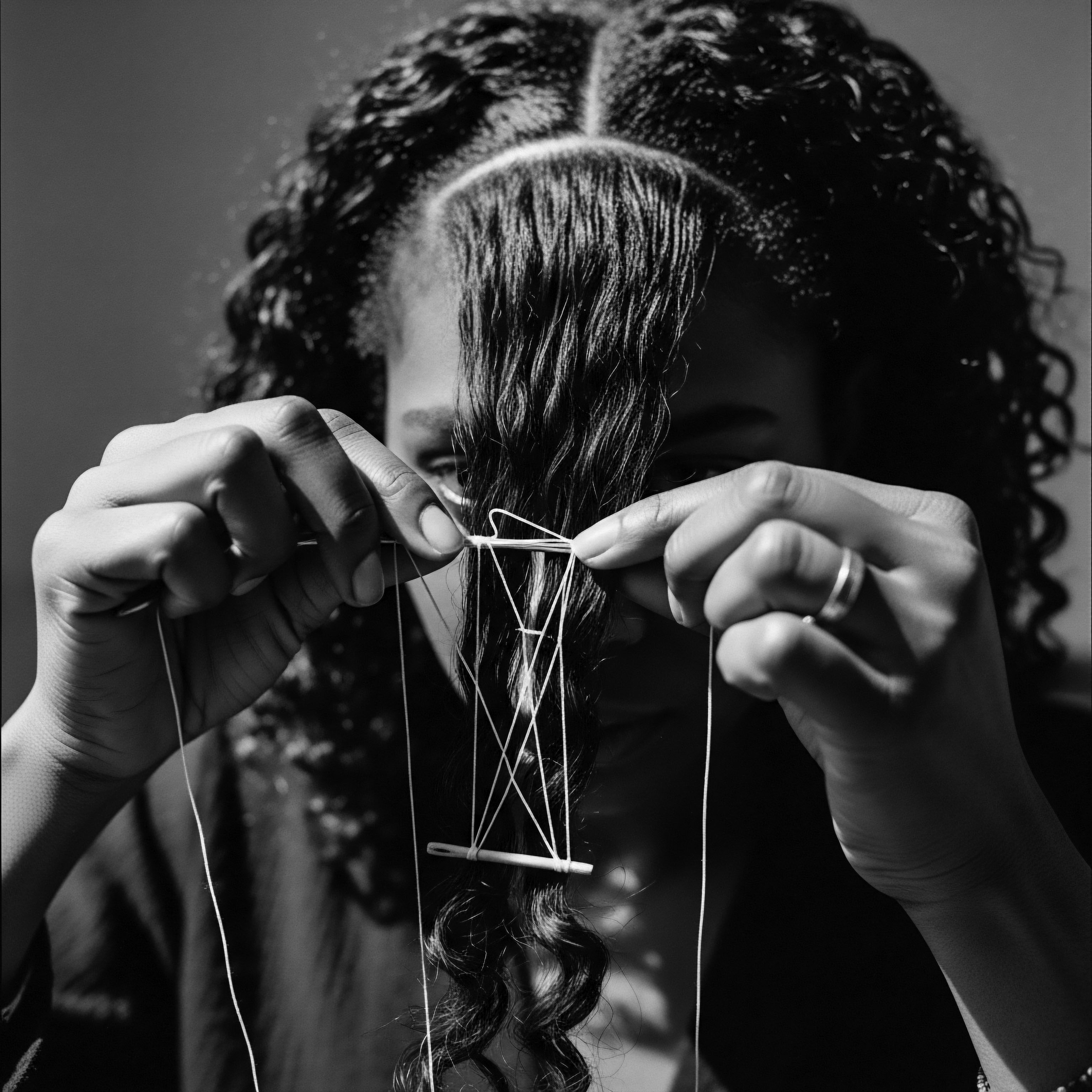
The Biology of the Scalp’s Surface
The scalp’s epidermal layer, a dynamic expanse, renews itself continually. For textured hair, the density of follicles can be quite high, influencing the micro-environment. The sebaceous glands, adjacent to each follicle, produce sebum, a natural oil. While sebum offers a protective film, its ability to travel down the spiraled hair shaft of textured hair is less efficient compared to straight strands.
This inefficiency can sometimes lead to sebum buildup on the scalp, potentially fostering an environment conducive to certain microbial imbalances, such as those associated with seborrheic dermatitis. Conversely, the hair length can also result in the scalp feeling drier if the sebum is trapped at the roots or not effectively distributed.
The intricate network of blood vessels beneath the scalp’s surface is crucial for delivering nutrients and oxygen to the hair follicles, thereby supporting hair growth. Maintaining robust circulation through practices like gentle scalp massage, a technique with roots in many ancestral grooming rituals, contributes to this vital supply line. The scalp’s sensory nerves also play a role, signaling discomfort or irritation, which are cues for adjusting care practices. Paying attention to these signals is part of an informed approach to textured scalp vitality.
The diversity of hair textures within the Black and mixed-race diaspora means that generalizations about scalp care can fall short. From loosely coiled waves to tightly compacted kinks, each spectrum along the curl pattern exhibits slightly different characteristics in terms of oil distribution, moisture retention, and vulnerability to external factors. This emphasizes the need for personalized regimens, informed by both scientific understanding and cultural knowledge of diverse hair needs.
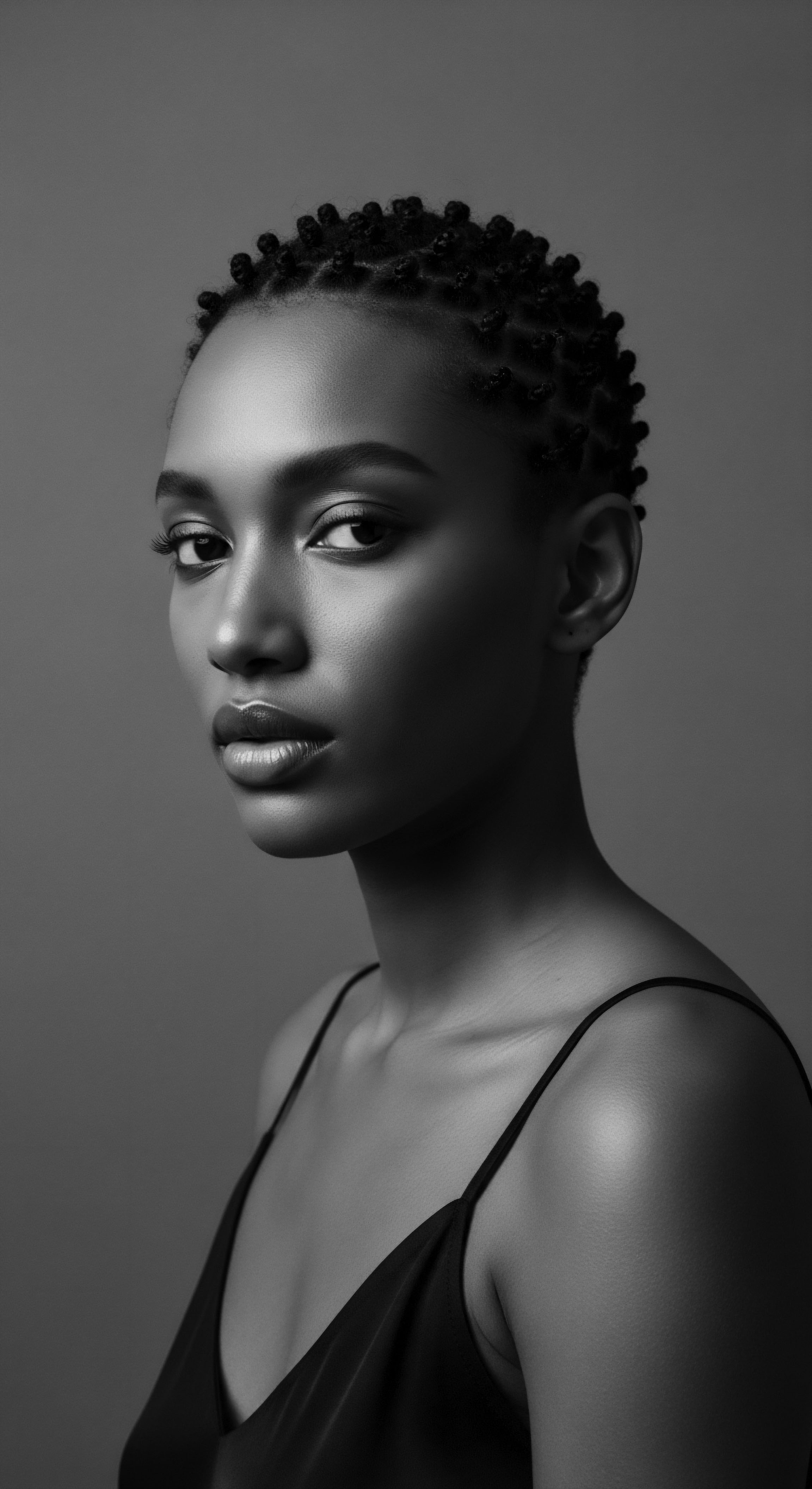
Traditional Remedies and Their Echoes
Ancestral populations across Africa and the diaspora developed a rich pharmacopoeia of natural ingredients, each selected for its perceived benefits to the scalp and hair. These remedies were often passed down orally, their efficacy confirmed through generations of observation.
- Baobab Oil ❉ Extracted from the seeds of the baobab tree, this oil, prevalent in parts of Southern and West Africa, possesses a high content of fatty acids, ideal for soothing dry, flaky scalps. Its application reflected a holistic understanding of the scalp as needing both nourishment and protection.
- Rhassoul Clay ❉ Originating from the Atlas Mountains of Morocco, this mineral-rich clay was historically used for cleansing the hair and scalp without stripping natural oils. Its absorbent yet non-drying properties made it suitable for maintaining the scalp’s natural balance, a gentle alternative to harsh cleansers.
- Chebe Powder ❉ A practice from the Basara Arab women of Chad, this blend of herbs, including lavender croton and resin, is applied to hair to seal in moisture and promote length retention. While primarily for hair, its conditioning effects contribute indirectly to a less strained, more comfortable scalp by reducing breakage.
These examples are not isolated incidents but rather illustrations of a widespread cultural intelligence that predates modern dermatology. The understanding of the environment and its resources, coupled with meticulous observation, allowed for the development of practices that supported textured scalp health for millennia. The wisdom in these applications resides in their gentle nature and their reliance on elements that work harmoniously with the body’s natural systems.
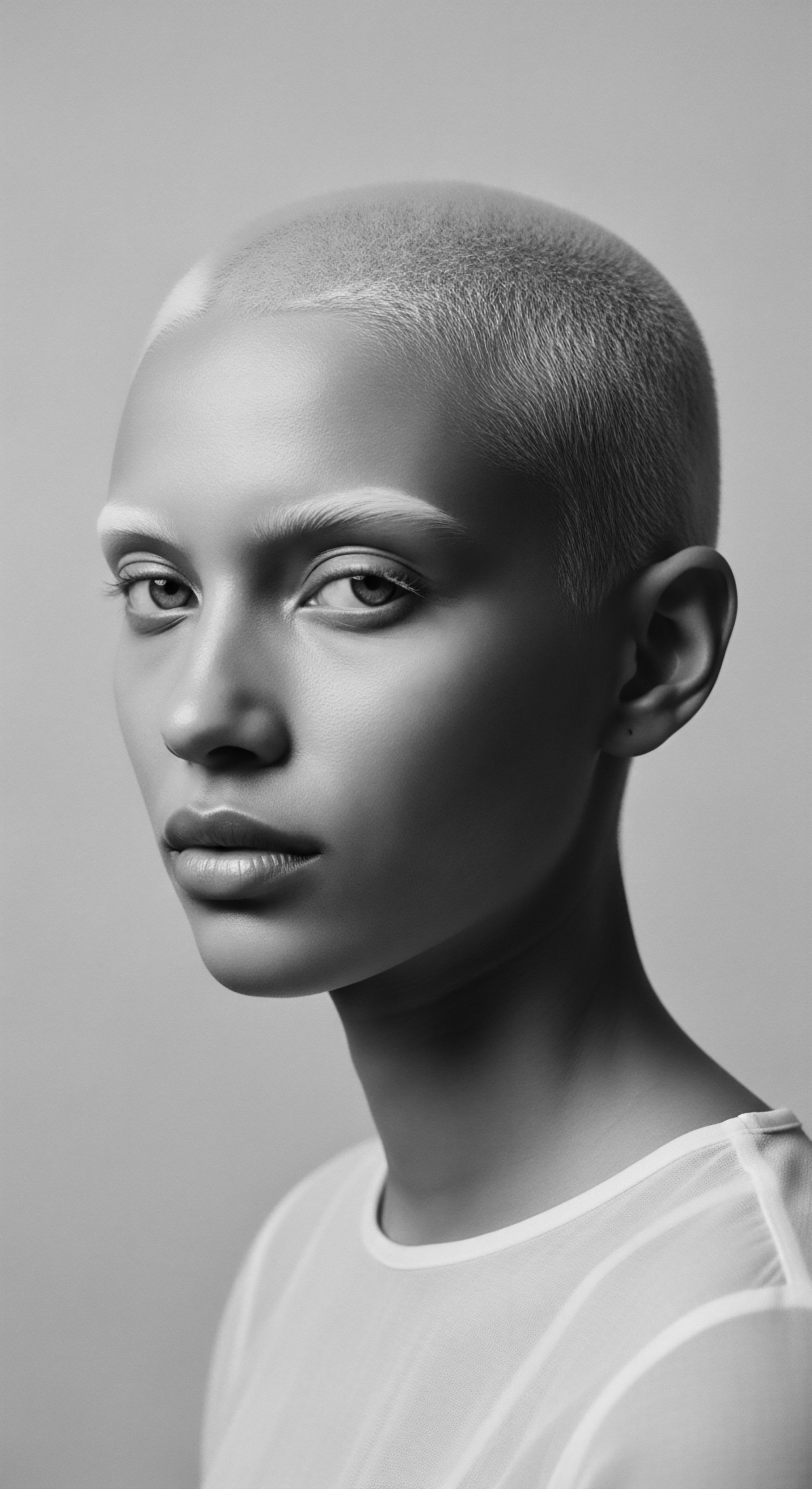
Environmental Influences and Adaptation
Climatic conditions, from arid desert air to humid tropical environments, have historically shaped hair and scalp care practices. In dry climates, the emphasis was heavily placed on emollients to prevent moisture loss from the scalp. In humid regions, the focus might shift to preventing fungal growth or managing excess moisture.
These environmental adaptations are crucial threads in the larger story of textured scalp health. The ability of ancestral communities to devise effective care regimens tailored to their specific environments speaks volumes about their observational prowess and ingenuity.
| Climatic Zone Arid/Desert (e.g. Sahel) |
| Traditional Scalp Care Strategy Heavy, occlusive plant butters and oils (e.g. Shea butter, Marula oil) applied regularly. |
| Scientific Rationale (Modern Lens) Creates a lipid barrier to minimize transepidermal water loss (TEWL), protecting against dryness and cracking. |
| Climatic Zone Humid/Tropical (e.g. West African Coast) |
| Traditional Scalp Care Strategy Clay washes, herbal rinses, lighter oils; emphasis on thorough, gentle cleansing. |
| Scientific Rationale (Modern Lens) Manages excess sebum and prevents microbial overgrowth (like Malassezia yeast) common in humid conditions, promoting a clean scalp. |
| Climatic Zone Temperate (e.g. parts of Southern Africa) |
| Traditional Scalp Care Strategy Balanced approach using conditioning oils and occasional clarifying herbs. |
| Scientific Rationale (Modern Lens) Responds to seasonal shifts, providing moisture in drier periods and cleansing during warmer, more active times, maintaining equilibrium. |
| Climatic Zone These traditional responses reveal a deep understanding of environmental impact on textured scalp health, a legacy that informs our contemporary practices. |
The knowledge embedded in these historical adjustments reminds us that scalp health is not a static concept but a dynamic interplay with one’s surroundings, a relationship that has been refined and passed down through the ages.
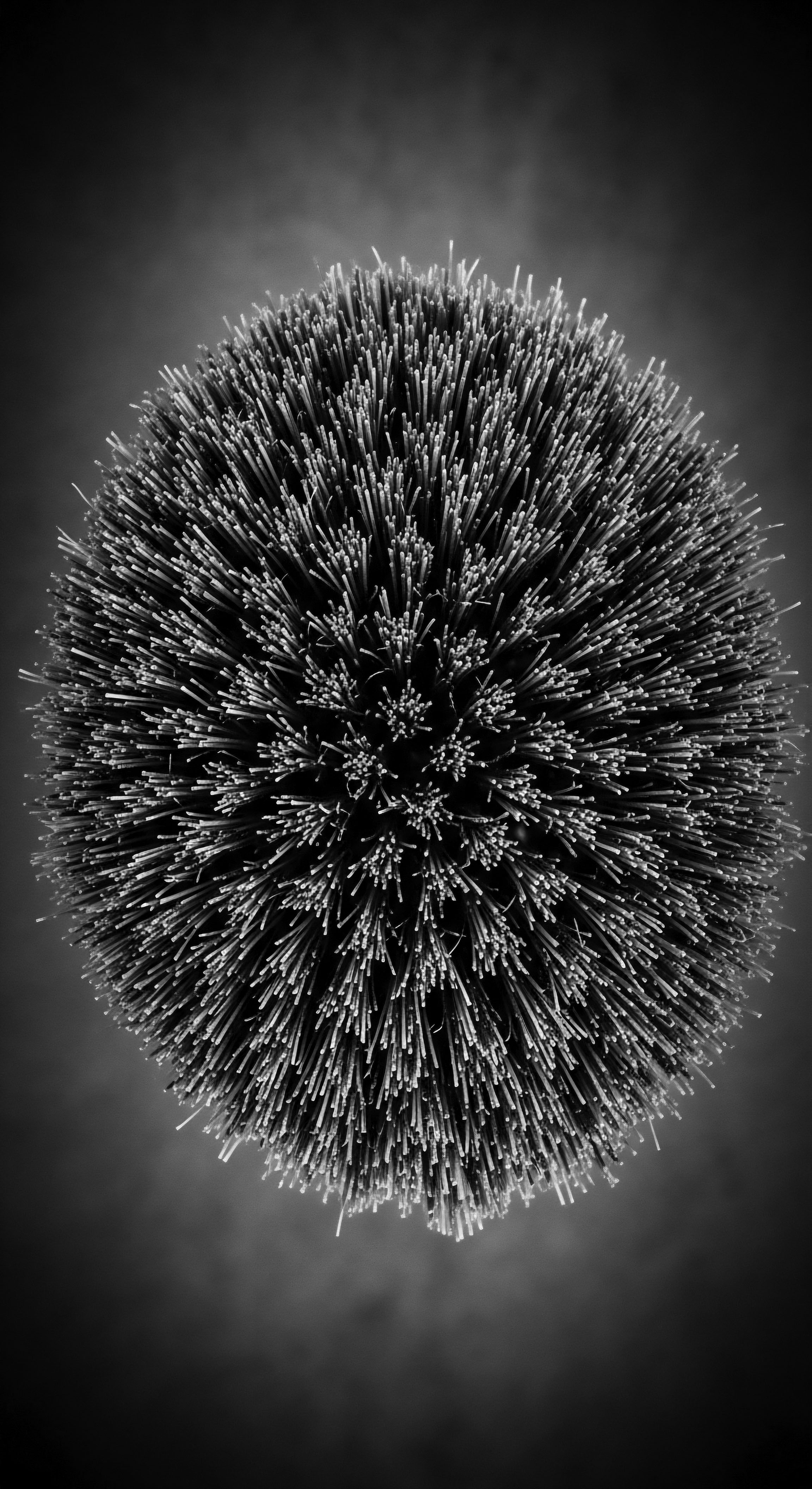
Academic
The precise meaning of Textured Scalp Health, viewed through an academic and deeply heritage-centered lens, denotes a multidimensional state of physiological and psychosocial well-being of the epidermis and dermis underlying textured hair, particularly within Black and mixed-race populations. This concept extends beyond mere dermatological assessment, encompassing a dynamic equilibrium of the scalp’s microbiome, the structural integrity of its follicular units, and the intricate biochemical processes governing cellular turnover and sebum regulation. It is a state profoundly influenced by, and often in direct dialogue with, centuries of ancestral hair care traditions, the historical imposition of Eurocentric beauty standards, and the subsequent development of specific hair practices and products within the diaspora. Textured Scalp Health, in this sophisticated view, acknowledges the hair follicle’s unique elliptical morphology and the characteristic twists of the hair shaft, which predispose the scalp to certain physiological responses, including differential sebum distribution and increased susceptibility to tension-induced conditions.
Furthermore, it critically assesses the historical and contemporary societal pressures that have led to the widespread adoption of potentially damaging chemical and mechanical styling methods, thereby altering the scalp’s natural state and contributing to specific dermatological concerns. This academic understanding demands a critical examination of how social determinants of health, deeply rooted in the legacies of colonialism and racial discrimination, manifest as tangible scalp pathologies, while simultaneously recognizing the enduring resilience and wisdom inherent in traditional, heritage-informed care regimens that support its enduring vitality.
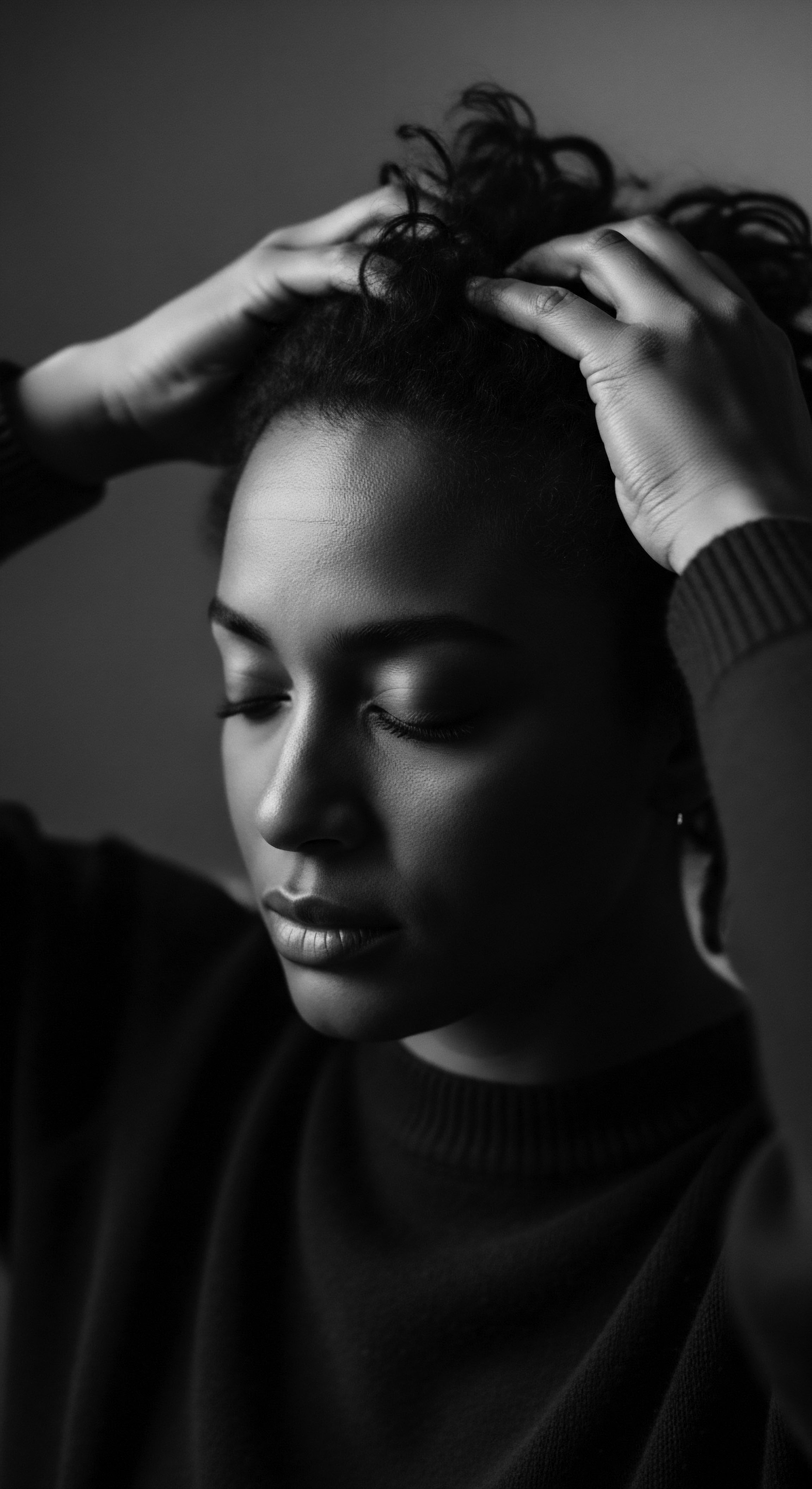
The Legacy of Scalp Vulnerability and Resilience
The historical experience of Black women, specifically, presents a profound case study in the intersection of cultural pressures and scalp health. For generations, Eurocentric beauty ideals dictated that straightened hair was a prerequisite for professional acceptance and social mobility in Western societies (Quinn et al. 2003). This societal conditioning led to the pervasive adoption of chemical hair relaxers, a practice that, while offering a semblance of conformity, often came at a significant physiological cost to the scalp.
These lye-based or no-lye alkaline agents, designed to permanently alter the disulfide bonds of the hair, frequently caused direct chemical burns, irritation, and inflammation on the scalp surface. The repeated trauma of these applications, sometimes beginning in childhood and continuing for decades, created a chronic state of dermal compromise.
The academic examination of textured scalp health reveals a profound connection between historical beauty mandates and tangible physiological outcomes, a legacy demanding conscious reconsideration.
Studies investigating the long-term impact of these chemical exposures present a compelling, albeit disturbing, link to broader health disparities. A rigorous review of epidemiological data has indicated that Black Women Who Report Using Hair Products Containing Lye at Least Seven Times a Year for More Than 15 Years Face a 30% Increased Risk of Developing Cancer (Black Skin Directory, 2025). This statistic stands as a stark testament to the profound and systemic consequences of cultural pressures on the physical well-being of the scalp and, by extension, the entire body.
It underscores that textured scalp health is not merely a cosmetic concern; it is a critical public health issue inextricably tied to the historical lived experiences and societal pressures placed upon Black and mixed-race individuals. The sheer volume of women who have endured these treatments, driven by a deeply ingrained societal mandate, paints a picture of a health landscape shaped by forces beyond individual choice.
The scalp’s inherent regenerative capacity, though robust, can be overwhelmed by persistent chemical insult. Chronic inflammation and repeated injury from harsh relaxers can lead to conditions such as Central Centrifugal Cicatricial Alopecia (CCCA), a form of scarring hair loss disproportionately affecting women of African descent. While the exact etiology of CCCA is multifactorial, including genetic predispositions, historical exposure to damaging chemical treatments is a well-documented contributing factor (St.
George’s Hospital, 2025). This scarring represents a permanent alteration of the scalp’s architecture, where healthy hair follicles are replaced by fibrotic tissue, illustrating the profound and often irreversible consequences of historical hair care practices.
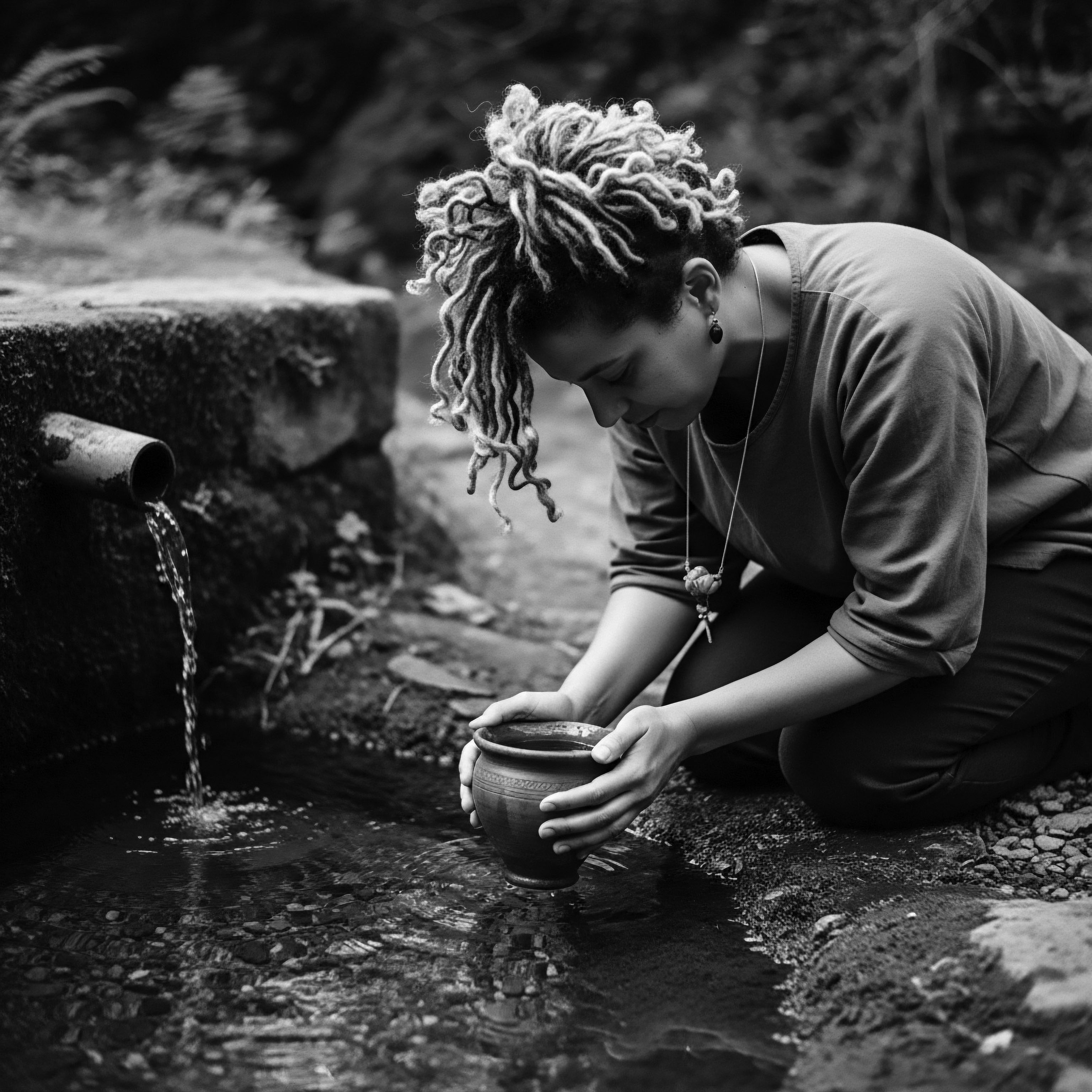
Microbiological Dynamics and Ancestral Insights
The scalp maintains a complex microbial community, a delicate ecosystem of bacteria, fungi, and mites that coexist with the human host. In a healthy scalp, this microbiome exists in a state of balance, contributing to the skin’s barrier function and immune response. For textured hair, the architecture of the follicle and the retention of sebum within the coils can influence this microbial balance. Infrequent cleansing, often a consequence of beliefs that textured hair should be washed less frequently to avoid dryness, can sometimes lead to sebum buildup, potentially providing a substrate for the overgrowth of certain yeasts, such as Malassezia species, commonly associated with seborrheic dermatitis (Healthline, 2022).
However, ancestral practices offer a counterbalance to these modern challenges. Traditional African communities often employed herbal rinses and plant-based washes that possessed natural antimicrobial properties. While not possessing a scientific understanding of microbial ecology, their intuitive use of ingredients like Neem (Azadirachta Indica) in West Africa or specific clays in North Africa, known for their cleansing and purifying actions, likely contributed to maintaining a balanced scalp microbiome (Mouchane et al.
2024), These practices underscore a deep, empirical understanding of scalp hygiene that predates contemporary microbiology. The knowledge was passed down through generations, observing the efficacy of these natural agents in promoting scalp clarity and comfort.

Follicular Architecture and Mechanical Stress
The unique structural attributes of afro-textured hair, characterized by its elliptical hair shaft and the marked curvature of its follicle, render it inherently more fragile and susceptible to breakage compared to straight hair types (British Journal of Dermatology, 2024). This inherent structural delicacy means that mechanical forces exerted during styling can have a more pronounced impact on the scalp. Historically, tightly pulled styles like cornrows and braids, while serving as protective measures for hair length and cultural expression, could, if applied with excessive tension, induce strain on the follicular unit.
This prolonged tension leads to Traction Alopecia, a condition where persistent pulling damages the hair follicle, resulting in localized hair loss, particularly along the hairline (St. George’s Hospital, 2025).
The academic study of such conditions reveals the intricate relationship between styling choices, hair biology, and scalp health outcomes. It highlights the need for nuanced care practices that honor cultural aesthetics while prioritizing physiological integrity. This includes recognizing the warning signs of excessive tension and educating individuals on techniques that minimize stress on the delicate scalp.
The very act of combing and detangling textured hair requires tools and methods that differ significantly from those used for straighter hair. Ancestral communities developed wide-toothed combs and practiced finger-detangling, recognizing the fragility of coiled strands and seeking to minimize mechanical trauma.
The interplay of historical context, genetic predispositions, and environmental factors creates a complex web of influences that shape the condition of textured scalps across the globe.
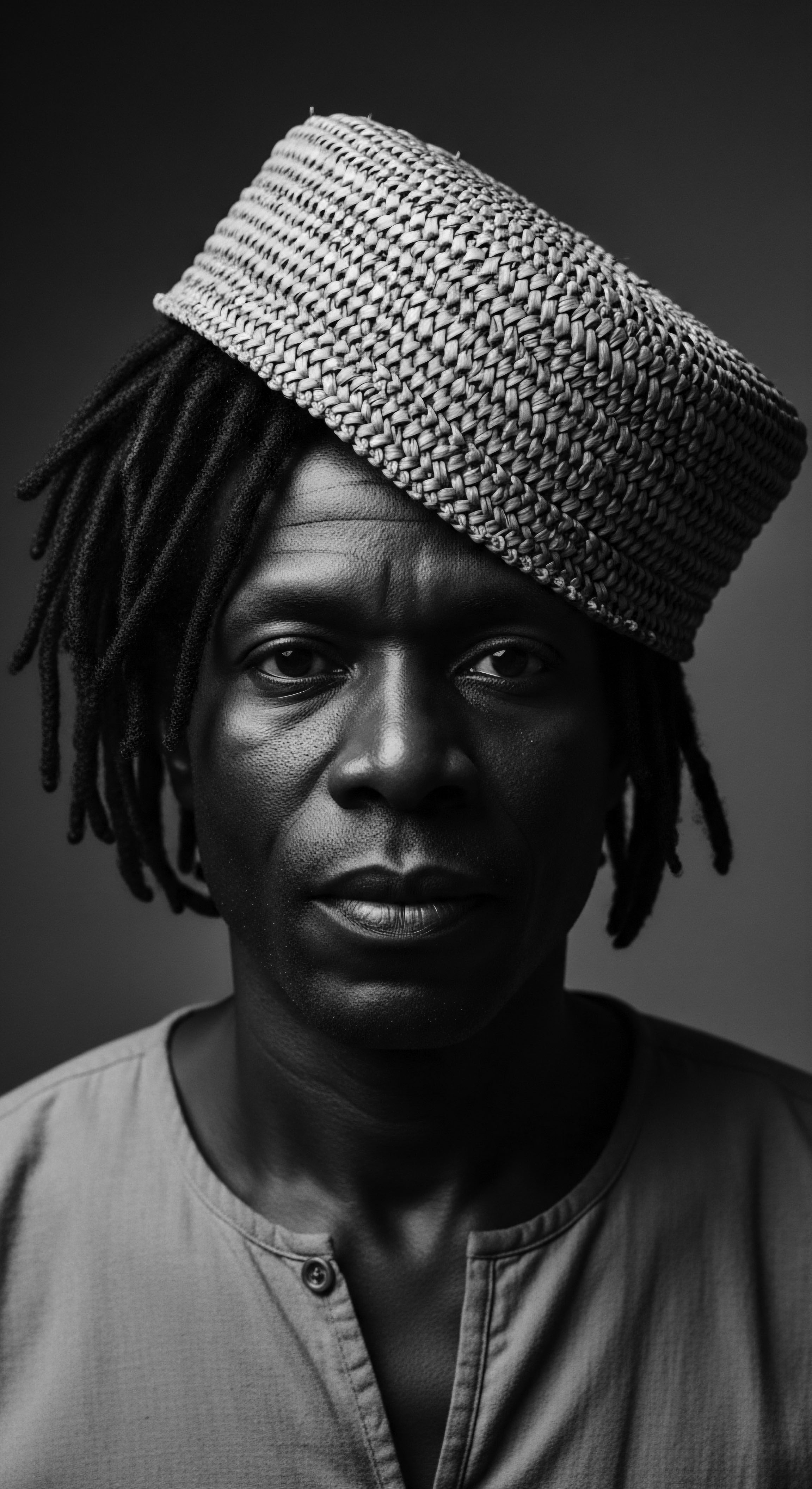
The Socio-Cultural and Psychological Dimensions
Textured scalp health cannot be fully understood without acknowledging its profound socio-cultural and psychological dimensions. The scalp, as the source of hair, became a site of struggle and resilience during periods of intense racial oppression. During the transatlantic slave trade, the forced shaving of African captives’ heads was a deliberate act of dehumanization, intended to strip them of their identity and cultural connection (African American Museum of Iowa, 2024), (African American Registry, 2024).
This violent act of scalp alteration severed not only the physical link to ancestral hairstyles but also the spiritual and communal ties that hair represented (Okan Africa Blog, 2020). The scalp, therefore, became a silent witness to immense trauma, its condition reflecting the brutal realities of enslavement and the subsequent pressures to conform.
The persistent societal bias against natural textured hair in many post-colonial societies, often associating it with lack of professionalism or disorder, has also influenced scalp health. Individuals might feel compelled to adopt styling practices that are detrimental to their scalp’s well-being in pursuit of perceived acceptance. This constant negotiation between self-expression, cultural identity, and societal expectations creates psychological stress that can, in turn, manifest physiologically on the scalp. Conditions like scalp itching or increased sensitivity can sometimes be exacerbated by stress, creating a feedback loop between mental state and physical symptoms.
The natural hair movement, which gained renewed momentum in the 2000s, represents a significant cultural and health reclamation. It signals a collective decision to reject imposed beauty standards and return to practices that celebrate the inherent nature of textured hair and, by extension, the health of the scalp it originates from. This movement has facilitated a widespread sharing of knowledge about gentle cleansing, effective moisturization, and protective styling that respects the hair’s natural structure, thereby fostering a more holistic and positive relationship with textured scalp health (St. George’s Hospital, 2025).
The academic lens, therefore, encourages a holistic perspective, one that integrates dermatological science with anthropological understanding, historical context, and the lived experiences of individuals. It seeks to provide a comprehensive explanation of Textured Scalp Health, acknowledging its biological intricacies, its susceptibility to environmental and cultural pressures, and its enduring connection to identity and heritage. This viewpoint affirms that optimal textured scalp health is achieved not merely through clinical intervention but through a profound respect for its historical journey and its cultural meaning.
- Scalp Micro-Environment ❉ The ecological balance of microbial flora and fauna, including bacteria and fungi, residing on the scalp surface. Maintaining this balance is key to preventing conditions like seborrheic dermatitis or folliculitis.
- Follicular Physiology ❉ The function and structure of individual hair follicles, which are the anchors for hair strands. For textured hair, the elliptical shape of these follicles and their curved growth pattern are distinguishing features.
- Dermal Barrier Function ❉ The protective role of the skin on the scalp, preventing moisture loss and resisting penetration by irritants or pathogens. Compromised barrier function can lead to dryness, irritation, and heightened sensitivity.
- Sebum Regulation ❉ The controlled production and distribution of the scalp’s natural oils by sebaceous glands. Proper regulation ensures adequate moisture without excessive greasiness or buildup that could clog follicles.
This comprehensive view supports the notion that the health of the scalp is intrinsically linked to the overall vitality of textured hair, a relationship shaped by both nature and centuries of human experience.
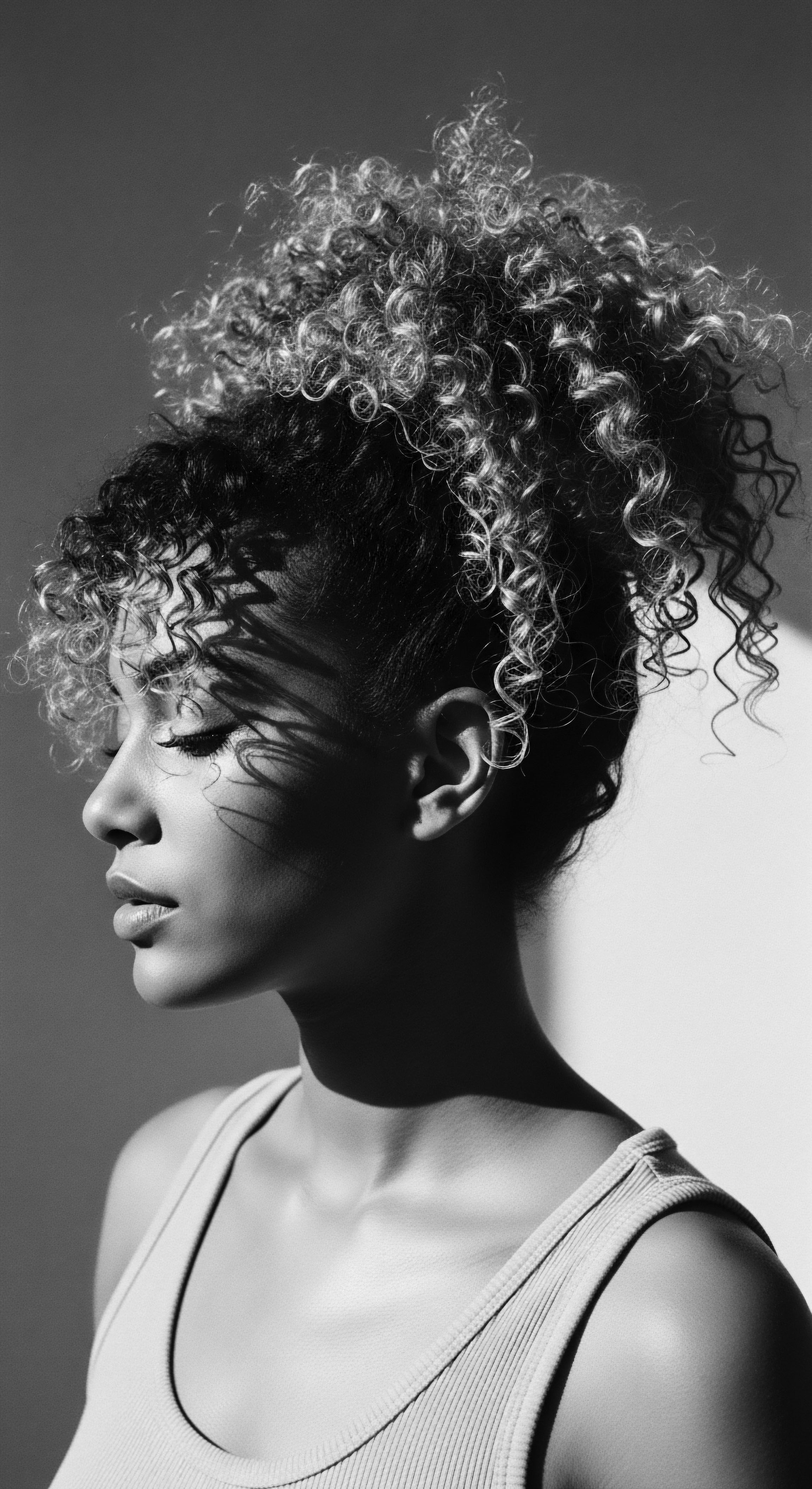
Reflection on the Heritage of Textured Scalp Health
Considering the journey of Textured Scalp Health reveals more than biological mechanisms or care routines; it unveils a profound meditation on endurance, adaptation, and an unwavering connection to ancestral knowledge. The scalp, for those with textured hair, has served as a silent chronicle, bearing witness to the forced disruptions of identity during the era of transatlantic enslavement, the pressures of assimilation, and the triumphant resurgence of natural expression. Its well-being is not just a dermatological condition but a living testimony to the resilience of communities and the enduring spirit of self-definition.
The wisdom passed down through generations, often in hushed tones within communal spaces, speaks of ingredients drawn from the earth and practices rooted in reverence. These are not merely historical footnotes; they are the very soil from which modern understanding grows, enriching our approach to care with an undeniable cultural depth.
The quest for optimal scalp health, therefore, becomes an act of honoring heritage. It is a recognition that the treatments and methods employed today carry echoes of centuries-old ingenuity. From the traditional uses of plant oils to the collective resistance against damaging societal norms, every choice in tending to textured hair and its scalp represents a continuity.
This journey of understanding allows us to appreciate the profound significance of each strand, not just as a fiber but as a part of a larger, living archive of human experience. It reinforces the notion that the scalp is a sacred space, a nexus where past, present, and future converge, forever intertwined with the heritage of those who bear its beautiful, textured crown.

References
- African American Museum of Iowa. (2024). History of Hair.
- African American Registry. (2024). Black Hair Care and Its Culture, a story.
- Black Skin Directory. (2025). Hair Relaxers, Cancer Risks and Black Women’s Health.
- British Journal of Dermatology. (2024). H04 A historical journey of the structure, texture, and identity of afro-textured hair.
- Healthline. (2022). Finding Eczema Relief for Black and Brown Women with Severe Itchy Scalp.
- Mouchane, M. Taybi, H. Gouitaa, N. & Assem, N. (2024). Ethnobotanical Survey of Medicinal Plants used in the Treatment and Care of Hair in Karia ba Mohamed (Northern Morocco).
- Okan Africa Blog. (2020). The significance of hair in African culture.
- Quinn, C. R. Quinn, T. M. & Kelly, A. P. (2003). Hair care practices in African American women. Cutis, 72(4), 280-2, 285-9.
- St George’s Hospital. (2025). Afro-textured Hair.
